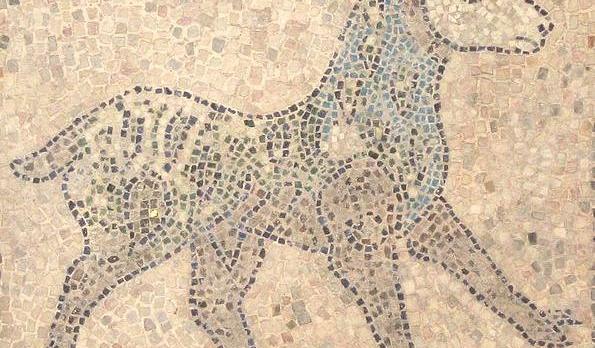The church of Saint John the Evangelist in Ravenna, Italy, was commissioned by the Empress Placidia in the year 424. The story goes that, while she was traveling across the Adriatic Sea to reach Ravenna, in order to assume the government of the Western Roman Empire on behalf of her son, Emperor Valentinian III, a heavy storm broke out. The empress, who was traveling with her son Placidus and her daughter Iusta, prayed to Saint John, asking him to carry them safely to Ravenna.
To this day, at the door of the church, one can read the inscription in marble: “Gala Placidia, along with her son Placidus Valentinian Augustus and her daughter Honoria Iusta Gratia Augusta, paid their vows for being released from the perils of the sea.”
The Basilica today, however, is far from what it was in Gala Placidia’s times: the first expansion of the central aisle of the Basilica dates from the seventh century, but this was just the first of many others, made by the Crusaders in the 12th and 13th centuries. Then, another series of renovations was also added in the 17th century. And in the 20th century, after Allied bombers mistakenly destroyed the west façade almost in its entirety, the Basilica had to be rebuilt, although they did use the original materials of the very same temple.
It was one of the of 13th-century renovations that was responsible for bringing a unicorn into the building. A series of mosaics, originally added to the floors of the basilica, were commissioned by Abbot William in order to commemorate the Fourth Crusade, including the reconquest of Zara and Constantinople. But among these historical scenes, many others from both mythical and medieval folklore (including, for example, a siren) slipped in. Among them, the unicorn we happen to be chasing. But what can a unicorn and Christianity have in common?
Everything could be a matter of mistranslation. Unicorns, difficult as it is to believe, are mentioned in the Bible. Moreover, not one, nor two, but nine times in total. Most biblical scholars point out that this is a mistranslation of the Hebrew word re’em, which means “ox” or “buffalo.” Some other point out that this re’em instead refers to a rhinoceros, as the beast is described in the bible as an incredibly strong animal. Interestingly, there are one-horned rhinos, which would make the presence of the unicorn-re’em beast in the biblical text something a little more consistent.
Translation aside, the fact is that the unicorn, as a mythical figure, found a place of its own in Christian iconography, to the point of becoming a Christological symbol. Strange as it may seem, the unicorn is considered to be an image of Christ in medieval iconography. But why?
A medieval legend, based on the Physiologus (a text of the second century after Christ, written by an anonymous Alexandrian author), describes the unicorn as an animal impossible to capture by anyone but a virgin. Attracted by the purity of an immaculate maiden, the unicorn would sleep in her lap. Only there could the hunters catch him. The legend was understood and read by Christian exegetes as an allegory of the Incarnation of Christ: the Creator of the Universe, impossible to contain, makes himself human and vulnerable in the womb of Mary immaculate.

